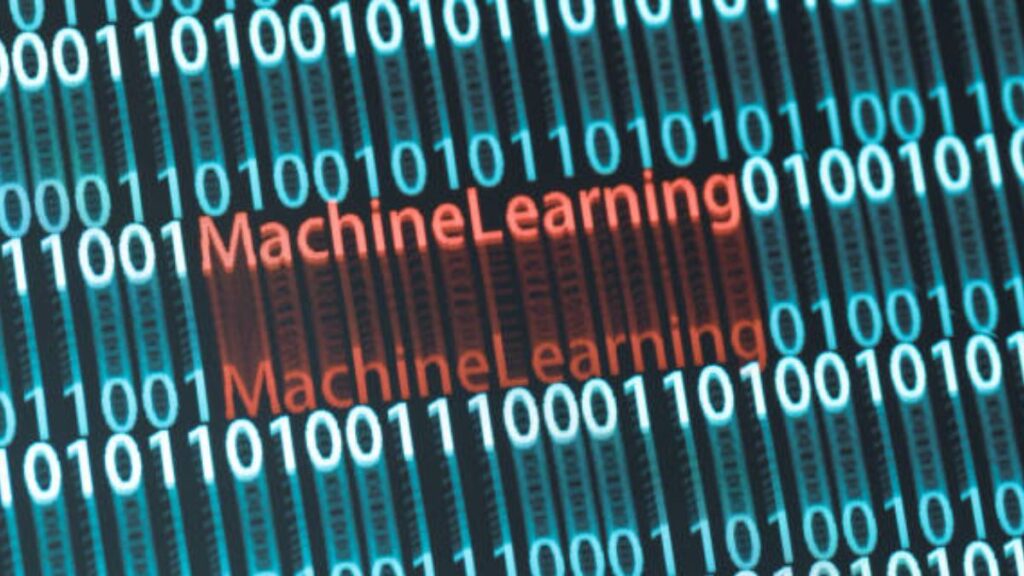Every day, headlines scream about artificial intelligence taking over jobs and reshaping entire industries. It’s easy to feel a mix of excitement and anxiety. What does this really mean for you, your skills, and your career path? The truth is, the revolution isn’t a distant future; it’s happening now. But here’s the crucial part: the power of AI, specifically through Machine Learning, is no longer locked away in high-tech labs. It has become incredibly accessible. In this comprehensive guide, you will learn about the five key Machine Learning trends that are actively changing our jobs and, most importantly, how you can leverage this democratized technology to not just survive, but thrive.
The Democratization of AI: No PhD Required
For decades, the field of artificial intelligence was an exclusive club. Building intelligent systems required teams of data scientists with advanced degrees and access to supercomputers that cost millions. This high barrier to entry meant that only the world’s largest corporations could play in the AI sandbox. However, a monumental shift has occurred. The rise of cloud computing, open-source software, and user-friendly platforms has shattered these walls.
This process is known as the democratization of AI. It means that powerful Machine Learning tools are now available to small businesses, entrepreneurs, and even curious individuals. You don’t need to code complex algorithms from scratch. Instead, you can use pre-built models and intuitive interfaces to analyze data, automate tasks, and generate insights. This accessibility is the engine behind the trends we see today, transforming AI from a job-replacement threat into a powerful co-pilot for human ingenuity.
The Core Drivers of Accessible AI
Several key developments have fueled this widespread availability. Understanding them helps contextualize the trends we’ll explore next.
-
Cloud-Based AI Services: Companies like Google, Amazon, and Microsoft offer AI as a service through their cloud platforms. You can simply tap into their pre-trained models for vision, language, and speech via an API.
-
No-Code and Low-Code Platforms: These tools provide drag-and-drop interfaces for building AI-powered applications. They allow business analysts and domain experts to create solutions without writing a single line of code.
-
Open-Source Libraries: Frameworks like TensorFlow and PyTorch, backed by tech giants, are free to use. They provide the building blocks for the global developer community to innovate and create new tools.
5 Machine Learning Trends That Are Reshaping Our Jobs
The accessibility of AI has accelerated the adoption of specific Machine Learning methodologies. These are not futuristic concepts; they are practical technologies with real-world applications that are changing the nature of work across sectors. Let’s dive into the five most significant trends.
1. Generative AI: The Creative Co-Pilot
Generative AI refers to models that can create new, original content. This goes beyond simple analysis; it’s about synthesis. From writing marketing copy and generating code to creating images and composing music, this trend is augmenting creative and analytical professions.
Impact on Jobs:
-
Writers & Marketers: Use tools like ChatGPT to brainstorm ideas, draft outlines, and create multiple versions of ad copy, enhancing productivity.
-
Software Developers: Leverage GitHub Copilot to get code suggestions and auto-complete entire functions, reducing repetitive typing and spotting errors.
-
Graphic Designers: Utilize platforms like Midjourney or DALL-E to rapidly generate visual concepts and mood boards, accelerating the initial design phase.
How to Adapt:
Instead of fearing replacement, learn to curate and refine. The human role shifts to being a skilled editor and director. Develop a critical eye for the output of these tools. The value lies in your unique creative vision, strategic direction, and ability to inject brand-specific nuance that a machine cannot replicate.
App Recommendation:
-
ChatGPT: The quintessential generative text tool. Use it for drafting emails, brainstorming content, explaining complex topics, and even learning new subjects. It’s an incredible partner for any knowledge worker.
2. Hyperautomation and AI-Powered Process Management
Hyperautomation is the concept of using AI and Machine Learning to automate as many business processes as possible. It’s not just about robotic process automation (RPA); it’s about integrating intelligence to handle unstructured data and make context-aware decisions.
Impact on Jobs:
-
Data Analysts: Automate data cleaning, reporting, and even initial analysis, freeing up time for deeper strategic interpretation.
-
Administrative & Accounting Staff: Automate invoice processing, report generation, and customer data entry, minimizing human error.
-
Supply Chain Managers: Implement intelligent systems that predict delays, optimize inventory levels, and automate reordering.
How to Adapt:
Focus on process intelligence. Become the person in your organization who identifies which tasks are ripe for automation. Understand the workflow deeply enough to design and manage these automated systems, ensuring they align with business goals.
App Recommendation:
-
Zapier: A powerful low-code automation tool that connects your favorite apps (like Gmail, Slack, and Sheets). You can create “Zaps” that automatically move information between them, saving hours of manual work.
3. Responsible AI and Model Transparency
As AI systems make more critical decisions, the demand for transparency and fairness has skyrocketed. Responsible AI is the practice of ensuring AI is used ethically, without bias, and in a way that humans can understand and trust. This has created entirely new specializations and concerns.
Impact on Jobs:
-
Compliance Officers & Lawyers: Now need to audit AI systems for regulatory compliance and ethical use.
-
Project Managers & Product Developers: Must build fairness, accountability, and transparency into the core of their AI-driven products.
-
Data Scientists: Are increasingly tasked with creating explainable AI (XAI)—models whose decisions can be clearly interpreted by humans.
How to Adapt:
Cultivate a strong ethical framework. Whether you’re in tech, law, or management, understanding the principles of bias mitigation, data privacy, and algorithmic fairness will be a highly valuable skill. Ask the tough questions about how and why an AI makes its decisions.
4. AI in Software Development (AI-augmented Engineering)
This trend is revolutionizing the very act of building software. AI-augmented engineering involves using intelligent tools throughout the development lifecycle, from writing code and debugging to testing and deployment.
Impact on Jobs:
-
Software Engineers: Spend less time on boilerplate code and debugging, and more on architectural design and complex problem-solving.
-
QA Testers: Use AI to automatically generate test cases, predict failure points, and perform relentless regression testing.
-
DevOps Engineers: Implement AI-powered monitoring tools that predict system failures and automatically scale resources.
How to Adapt:
Embrace the role of a conductor. Your value shifts from purely writing code to orchestrating AI tools to produce a high-quality final product. Deepen your skills in system architecture, security, and understanding user experience—areas where human insight remains paramount.
App Recommendation:
-
GitHub Copilot: An AI pair programmer that suggests whole lines or blocks of code as you type. It’s like having an experienced developer by your side, helping you code faster and learn new languages or frameworks.
5. The Proliferation of Small Language Models (SLMs)
While large language models (LLMs) like GPT-4 are powerful, they are also resource-intensive. A growing trend is the development of Small Language Models that are faster, cheaper to run, and can be fine-tuned for specific, specialized tasks. This makes powerful NLP accessible for niche applications.
Impact on Jobs:
-
Industry-Specific Experts (e.g., Doctors, Lawyers): Can use SLMs trained on medical journals or legal case law to get instant, highly relevant insights without wading through generic internet searches.
-
Customer Support Managers: Can deploy efficient, specialized chatbots that are experts on their specific products, providing accurate and instant support.
-
App Developers: Can integrate sophisticated language understanding into mobile apps without requiring massive cloud computing power.
How to Adapt:
Look for opportunities within your niche. If you are a domain expert, explore how a specialized, fine-tuned AI could streamline your research or customer interactions. The future is not just one giant brain, but a constellation of specialized intelligent tools.
Your Action Plan: Thriving in an AI-Augmented Workplace
The common thread through all these trends is that AI is a tool for augmentation, not just automation. The most successful professionals will be those who learn to collaborate with intelligent systems.
-
Become a Lifelong Learner: Dedicate time each week to experiment with new AI tools. The landscape is evolving rapidly, and curiosity is your greatest asset.
-
Focus on Uniquely Human Skills: Double down on skills that AI struggles with: critical thinking, creativity, emotional intelligence, negotiation, and strategic vision.
-
Integrate One Tool at a Time: Don’t get overwhelmed. Pick one app or platform relevant to your work and master it. The goal is to build a personalized “AI toolbox.”
The Future is a Partnership
The narrative of artificial intelligence as a mere job destroyer is incomplete and misleading. The real story is one of transformation and collaboration. Machine Learning trends are making technology more intuitive and powerful, placing it directly into our hands. The future of work won’t be defined by humans versus machines, but by humans powered by machines. By understanding these trends and proactively adapting, you can position yourself at the forefront of this exciting new chapter.
Ready to Harness the Power of Accessible AI?
Don’t just read about the future—start building it into your daily workflow today. Explore the apps mentioned in this guide, like ChatGPT for creative tasks and Zapier for automation. Identify one repetitive task in your day and find an AI tool to streamline it. The first step to future-proofing your career is just a click away. Start your AI journey now!



